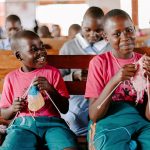The Price of Freedom
Nakato was a young girl when Uganda gained its independence from Britain in 1962. She remembered the joy and excitement that filled the streets of Kampala, the capital city, as people celebrated their freedom and dignity. She remembered the speeches and songs that praised the heroes and leaders who fought for their liberation and sovereignty. She remembered the flags and banners that displayed the colors and symbols of their new nation.
Nakato grew up in a time of hope and optimism, as Uganda embarked on its journey of development and democracy. She went to school and learned to read and write, to count and calculate, to think and question. She dreamed of becoming a teacher or a doctor, or maybe even a politician or a journalist. She wanted to contribute to her country’s progress and prosperity.
But Nakato also witnessed the challenges and conflicts that Uganda faced after independence. She saw the coups and wars that destabilized and divided the country. She saw the dictatorship and corruption that oppressed and exploited the people. She saw the poverty and disease that afflicted and killed many of her friends and family. She saw the violence and injustice that shattered her dreams and hopes.
Nakato realized that independence was not a simple or easy thing. It was not a gift or a privilege. It was a struggle and a responsibility. It was a price and a sacrifice. It was a process and a goal.
Nakato decided to join the resistance movement that opposed the regime of Idi Amin, who seized power in 1971 and ruled with an iron fist for eight years. She believed that he was a traitor and a tyrant, who betrayed the ideals and values of independence. She believed that he was an enemy and a threat, who endangered the security and stability of Uganda.
Nakato fought bravely and fiercely, alongside her comrades, against Amin’s forces. She endured hardship and suffering, hunger and thirst, pain and injury. She risked her life and liberty, for the sake of her country and people.
Nakato died in 1979, during the final battle that ousted Amin from power. She was one of the thousands of Ugandans who lost their lives in the fight for freedom. She was one of the millions of Ugandans who paid the price of independence.
Nakato’s story is not unique or exceptional. It is one of many stories that illustrate the complexity and diversity of Uganda’s independence journey. It is one of many stories that demonstrate the courage and resilience of Uganda’s culture and society.
By Kabengwa Alex
This post was created with our nice and easy submission form. Create your post!


